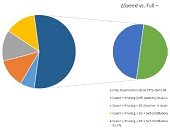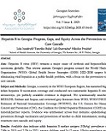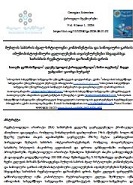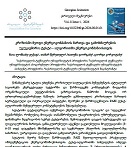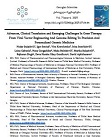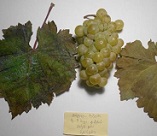Impact of fixed orthodontic braces on salivary pH and salivation rate
Downloads
No AbstractThe aim of the study was to evaluate the influence of standard fixed braces on the physiological indicators of saliva - saliva pH and salivation rate. Materials and methods: 40 healthy individuals aged 15 to 25 years (27 women and 23 men) who underwent orthodontic treatment with standard fixed braces were included in the study. with braces. Oral fluid flow/salivation rate and pH were determined three times in each individual: before orthodontic treatment, 24 hours after braces, and two months later. Results: 24 hours and 2 months after fixation of standard fixed braces, salivation rate does not change, and pH decreases statistically reliably 2 months after the start of treatment.
Downloads
Metrics
Al-Haifi, H.A.A., Ishaq, R.A.A. & Al-Hammadi, M.S.A. Salivary pH changes under the effect of stainless steel versus elastomeric ligatures in fixed orthodontic patients: a single-center, randomized controlled clinical trial. BMC Oral Health 21, 544 (2021).
Arab S, Nouhzadeh Malekshah S, Abouei Mehrizi E, Ebrahimi Khanghah A, Naseh R, Imani MM. Effect of Fixed Orthodontic Treatment on Salivary Flow, pH and Microbial Count. J Dent (Tehran). 2016 Jan;13(1):18-22.
Bardow A, Nyvad B, Nauntofte B. Relationships between medication intake, complaints of dry mouth, salivary flow rate and composition, and the rate of tooth demineralization in situ. Arch Oral Biol. 2001; 46:413–23.
Bonetti GA, Parenti SI, Garulli G, Gatto MR, Checchi L. Effect of fixed orthodontic appliances on salivary properties. Prog Orthod. 2013;14:13
Cardoso AA, de Sousa ET, Steiner-Oliveira C, Parisotto TM, Nobre-Dos-Santos M. A high salivary calcium concentration is a protective factor for caries development during orthodontic treatment. J Clin Exp Dent. 2020 Mar 1; 12(3):e209-e214.
Cardoso AA, Lopes LM, Rodrigues LP, Teixeira JJ, Steiner-Oliveira C, Nobre-Dos-Santos M. Influence of salivary parameters in the caries development in orthodontic patients-an observational clinical study. Int J Paediatr Dent. 2017 Nov; 27(6):540-550.
Chang HS, Walsh LJ, Freer TJ. The effect of orthodontic treatment on salivary flow, pH, buffer capacity, and levels of mutans streptococci and lactobacilli. Aust Orthod J. 1999;15: 229–34.
Cheng LL, Moor SL, Kravchuk O, Meyers IA, Ho CTC. Bacteria and salivary profile of adolescents with and without cleft lip and or palate undergoing orthodontic treatment. Aust Dent J. 2007;52: 315–21.
Dawes, C. (1987). Physiological Factors Affecting Salivary Flow Rate, Oral Sugar Clearance, and the Sensation of Dry Mouth in Man. Journal of Dental Research, 66(1_suppl), 648–653.
Edgar WM, Higham SM. Role of saliva in caries models. Adv Dent Res. 1995;9:235–8.
González-Aragón Pineda, A.E., García Pérez, A. & García-Godoy, F. Salivary parameters and oral health status amongst adolescents in Mexico. BMC Oral Health 20, 190 (2020).
Lara-Carrillo E, Batista NMM, Perez LS, Tavira JA. Effect of orthodontic treatment on saliva, plaque and the levels of Streptococcus mutans and Lactobacillus. Med Oral Patol Oral Cir Bucal. 2010; 15: 924–9. doi: 10.4317/medoral.15.e924.
Lenander-Lumikari M, Loimaranta V. Saliva and dental caries. Adv Dent Res. 2000; 14: 40–7. doi: 10.1177/08959374000140010601.
Leone CW, Oppenheim FG. Physical and chemical aspects of saliva asindicators of risk for dental caries in humans. J Dent Educ. 2001; 65:1154–62.
Makrygiannakis MA, Kaklamanos EG, Milosevic A, Athanasiou AE. Tooth wear during orthodontic treatment with fixed appliances: a systematic review. J Orthod. 2018; 66: 1–9.
Peros K, Mestrovic S, Milosevic SA, Slaj M. Salivary microbial and nonmicrobial parameters in children with fixed orthodontic appliances. Angle Orthod. 2011; 81:901–6.
Pyati SA, Naveen Kumar R, Kumar V, Praveen Kumar NH, Parveen Reddy KM. Salivary Flow Rate, pH, Buffering Capacity, Total Protein, Oxidative Stress and Antioxidant Capacity in Children with and without Dental Caries. J Clin Pediatr Dent. 2018; 42(6):445-449.
Richter AE, Arruda AO, Peters MC, Sohn W. Incidence of caries lesionsamong patients treated with comprehensive orthodontics. Am J OrthodDentofacial Orthop. 2011; 139:657–64
Ulukapi H, Koray F, Efes B. Monitoring cares risk of orthodontic patients. Quintessence Int. 1997; 28: 27–9.
Zanarini M, Pazzi E, Bonetti S, Ruggeri O, Bonetti GA, Prati C. In vitro evaluation of the effects of a fluoride-releasing composite on enamel demineralization around brackets. Progr Orthod. 2012; 13:10–6.
Zogakis IP, Koren E, Gorelik S, Ginsburg I, Shalish M. Effect of fixed orthodontic appliances on nonmicrobial salivary parameters. Angle Orthod. 2018; 88:806–811.

This work is licensed under a Creative Commons Attribution-NonCommercial-NoDerivatives 4.0 International License.





























